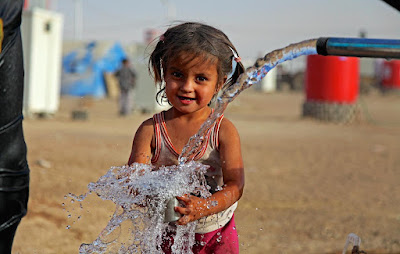Those who have studied water are seeing signs everywhere of an impending climate catastrophe.
First, some places have too much water. Because global warming has raised the temperature of the oceans, there is now more energy to fuel hurricanes and typhons. Recently in the Gulf of Mexico a category 4 hurricane, Ida, formed. It was so powerful that it rampaged through the entire east coast of the United States. Even in the northeastern states, the "tail" of Ida dumped record levels of rainfall in a very short time. These rainfalls were so unexpected that 50 people died trapped in their own homes and in cars on the road. Extreme rainfalls are now a global phenomenon, as seen in Germany and other countries.
The ocean is slowly rising due to the melting of glaciers and land-based ice. This will produce higher waves and tidal surges, as many coastal areas have already experienced.
Second, we have the problem of shortages of water. This phenomenon has produced extreme droughts in the western areas of North America, which is having serious effects on agriculture. It is also producing extreme wildfires in both the USA (California) and in Canada (B.C.). Extreme wildfires are now a global phenomenon as seen in Australia, some Mediterranean counties, and even in Siberia. Finally, drinking water shortages are now being reported in new areas like Iran, Syria, and South Africa.
Third, there is the problem of frozen water in snow and ice. Worldwide ancient glaciers are disappearing. The two polar ice caps are slowly declining. The northern ice cap has lost one half of its area since 1975. As these cooling agents disappear, one of the main mechanisms controlling our moderate temperature will be lost. When this happens, an irreversible tipping point will be breached.
The polar ice caps are mainly floating ice. When floating ice melts, it will not raise the ocean level. If you want to prove this, put an ice cube in a glass of water and see whether the level rises as the ice cube melts. However, when land-based ice melts the water from this melting can raise the ocean level. The two great land-based ice caps are in Greenland and Antarctica. These two sources of ice are melting at a frightening rate. It is these sources of ice that are causing sea levels to rise.
Up to now I have considered water in its liquid state (both its superabundance in places and its scarcity in other locations). I have also considered water in its solid state. But what about water in its vaporous state? It is a well-known fact that warmer air can hold more water vapour. For example, for every increase in the air temperature of one degree Centigrade, the air can hold 7 % more water vapour. This is one of the causes for more intensive rainfalls.
Water in all its forms gives us indicators of a changing climate. It is said that “water is life”. This means that without water, life as we know it would be impossible. If so, we should pay careful attention to the warning signs that water is giving us.
Ottawa
Wednesday, 15 September 2021






No comments:
Post a Comment